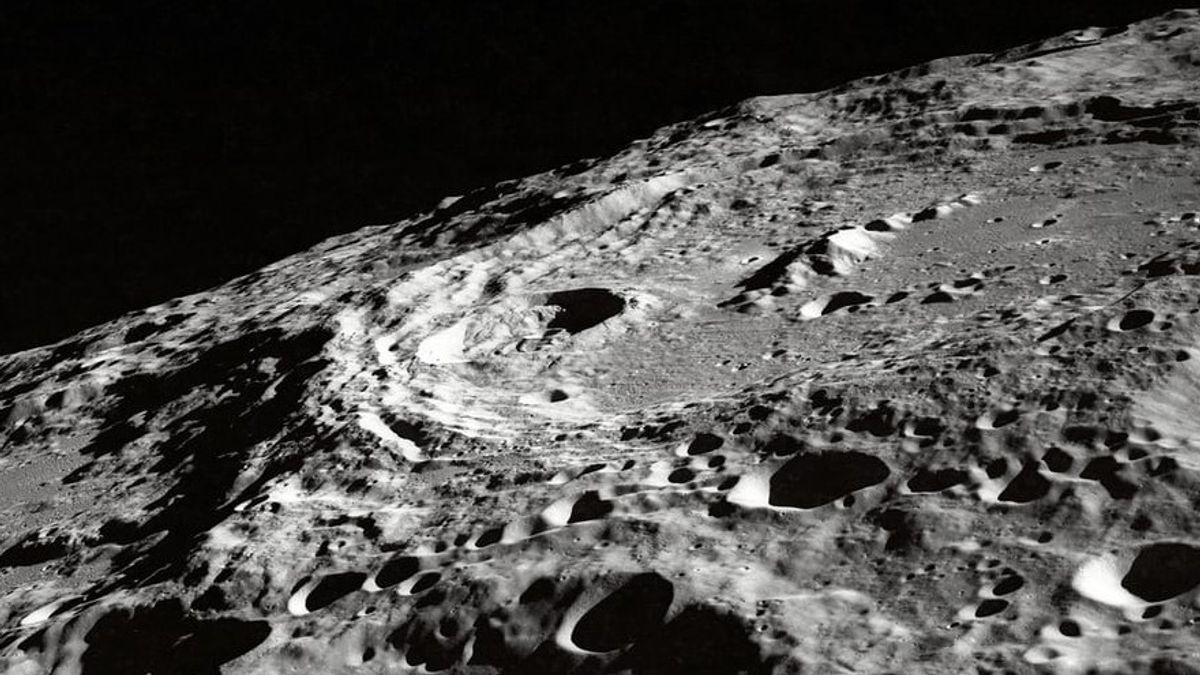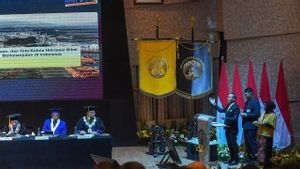JAKARTA - Astronomers have identified a near-Earth asteroid that may have come from fragments of the Moon. Dubbed Kamo'oalewa is what astronomers call a quasi-satellite Earth.
A quasi-satellite is a space rock that revolves around the Sun in an orbit so similar to Earth that it constantly stays close to the planet. Because Kamo'oalewa's orbit is slightly more tilted and slightly more elongated, the rock is constantly jumping slightly forward and falling slightly behind the planet, essentially making a constant spin around it.
The first time, a quasi-satellite was discovered in 2016 by astronomers using the Panoramic Survey Telescope and Rapid Response System (Pan-STARRS) telescope in Hawaii.
However, astronomers do not know much about this type of asteroid because it is usually very difficult to observe. In the case of Kamo`oalewa, scientists have only been able to observe it for a few weeks each April since its discovery.
"Kamo'oalewa is about four million times fainter than the faintest star we can observe with the naked eye in the night sky," said study lead author Ben Sharkey of the University of Arizona.
Between 150 and 190 feet (46 and 58 meters) in diameter, this asteroid is about the size of a ferris wheel. During its orbit, it comes within 9 million miles (14.5 million kilometers) of Earth. Like a large asteroid, but originally it is small when compared to other rock remains that can reach the size of the Empire State Building or larger.
However, only the largest ground telescopes on Earth can see asteroids, so astronomers use the Large Binocular Telescope on Mount Graham in southern Arizona for asteroid observations.
"The spectrum of Kamo'oalewa, or the pattern of reflected light, matches those of surface minerals and Moon rocks collected during NASA's Apollo missions," Sharkey said.
This suggests that Kamo`oalewa was once part of the Moon and broke away to form an asteroid. Astronomers are not sure when this collision event occurred because there are currently no other known moon-made asteroids.
The asteroid may have been the result of debris from an ancient impact event, or formed from the gravitational splitting of a larger object during a close encounter with Earth and the Moon.
Citing CNN International, Friday, November 12, the study, which has been published in the journal Communications Earth & Environment, also states that the asteroid's orbit, which makes it very difficult to see, also hints that it came from the Moon.
While study co-author Renu Malhotra states, Kamo'oalewa orbits the Sun in a similar way to Earth's way, it has a slight tilt unlike other near-Earth asteroids.
"It is highly unlikely that a near-Earth asteroid of the garden variety would spontaneously move into a quasi-satellite orbit like Kamo'oalewa's. It would not stay in this particular orbit for very long, only about 300 years in the future, and we expect it to arrived in this orbit about 500 years ago," Malhotra said.
But is it true that this is an asteroid that came from the Moon? Sharkey and his advisor Professor Vishnu Reddy did not have to wait too long to find out if their predictions were correct.
Because Kamo'oalewa is very close to Earth, so they can easily send a spaceship there to pick up the rock. That's what China's National Space Agency plans in 2024 with a mission dubbed ZhengHe.
"If we can get samples back from the spacecraft, we can compare them directly to the lunar rocks that we have. We can start asking when it formed. We can't detect it remotely. We can't tell how old this object is without visiting it." Sharkey said.
Meanwhile, astronomers say they may get more data using the soon-to-be-launched James Webb Telescope, and view objects in infrared.
The English, Chinese, Japanese, Arabic, and French versions are automatically generated by the AI. So there may still be inaccuracies in translating, please always see Indonesian as our main language. (system supported by DigitalSiber.id)













